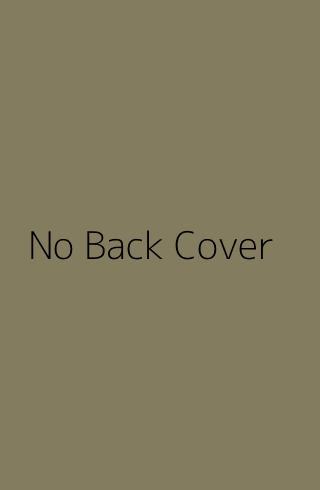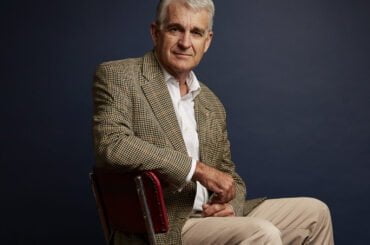In Context
Douglas Murray continues the expose and critique that he began in his Madness of Crowds, focussing on the West’s increasing loathing of itself, particularly through the lens of Critical Race Theory (CRT) and a general contempt for its own culture and history. It covers the remarkable events of the 2020 Black Lives Matter protests and riots, showing the ideology animating that movement. Murray gives a highly engaging account of how the same ideologies animating BLM are increasingly taking over corporations, schools, universities, and our politics.
Big Ideas
- Critical Race Theory is the ideology behind the criticism of the West as racist. It seeks to show how all of our institutions, practices, and language are vitiated by racism or “whiteness”.
- Our inability to find anything worthy of praise in our own civilisation is being weaponised by China to deflect attention from its own gross human rights abuses.
- Despite the fact that Karl Marx was a racist by modern standards, and Michel Foucault was a serial child abuser, they have not been demonized by critical theorists, as critical theory is built on their theories.
- Wokeness and antiracism is a new religion that seeks to replace Christianity, and Christians are helping it do so by adopting antiracist and woke ideology.
Critical Race Theory
Racism has been central to American public debate since the civil rights movement of the 1950s and 1960s. And yet the movement has changed dramatically, since Martin Luther King Jr pleaded for Americans to be colour blind and judge people according to their character rather than their skin. Now it is more common to hear demands for special treatment and status based on skin as well as insisting that, regardless of life experience and character, people may be called victims or oppressors based on the colour of their skin.
Murray attributes this to the rise of Critical Race Theory (CRT) in the universities, which has also spilled out into wider society, seen most spectacularly with the Black Lives Matter (BLM) protests and riots during 2020.
CRT performs a subtle sleight of hand when it comes to defining racism. Traditional definitions of racism were along the lines of thinking of and treating people as inferiors based on their race. This meant that if a white person did not consider non-whites inferior and treated them as equals then that person was not racist. It also meant that if a black person treated a white person as though they were inferior then that black person was a racist.
Robin DiAngelo, one of the most widely read advocates of CRT, defines racism as any system that contains disparities between races, and a racist as any person who profits from that system. This means that a white person who does not think of or treat non-whites any different is, by definition, a racist, because whites, according to CRT, tend to do better in life outcomes than non-whites. It also means that non-whites can treat other people as inferiors based on their race and not be deemed racist according to DiAngelo.
CRT also looks for so-called “micro-aggressions”, which usually involves scrutinizing language and speech for unintended racism. Macro-aggressions were acts like slavery, segregation, and discrimination. Micro-aggressions can include asking someone what their ethnic background is; charging more for treatments on curly hair; or telling someone of non-Anglo background that they speak excellent English. These are, according to critical race theorists, acts of passive aggressive racism, even if the aggressor doesn’t know it.
Murray shows that CRT has led to books such as To Kill a Mockingbird, Lord of the Flies, and The Scarlet Letter being taken off college’s curricula and replaced with CRT texts by DiAngelo and Ibram X Kendi. Students on college campuses are fed a steady diet of CRT in many of their subjects, including history, sociology, politics, law, and education. It has also seeped into corporations as employees must undertake courses in white fragility and unconscious bias workshops. Some who have publicly criticised such workshops as divisive have lost their jobs as a consequence.
Murray walks the reader through examples of social divisiveness ranging from false accusations of white supremacist views being promoted on the game show Jeopardy to academics fantasizing about killing white people during lectures. In other words, instead of just admitting that the West is nowhere near as racist as it was generations ago, CRT encourages us to just look extra hard for racism in people. Is it any wonder that wherever CRT goes division follows?
Hating Our History
Murray shows how there has been a coordinated attempt to undermine children’s esteem for Western civilisation in schools. In both the UK and the US children are taught about the history of slavery, colonialism, and segregation. The 1619 Project, sponsored by the New York Times argues that the true founding of America was when slaves were first brought to America (1619), and that racism is the lens through which America’s history must be understood.
The problem with the 1619 Project, as Murray points out, is that as well as getting a lot of history wrong, it is plainly a biased view of history, ignoring positive episodes in American history and accentuating the negative.
The social fruits of CRT and the demonization of Western civilisation were most clearly seen in the BLM movement in 2020. Years of being told that the West is deeply racist and unjust led many people to believe that destroying cities in the US and rioting in the UK was justified. Around America and the UK statues of historical figures deemed to be colonialists, slaveholders, or supporters of these practices were defaced and destroyed.
China’s Advantage
It is of course the case that China represents an economic and military threat to America and nations in the Asia pacific region. But the West bears much responsibility for the extent to which China has gained an economic and intelligence foothold in our democracies. As the Chinese economy grew, Western corporations scrambled to do business deals with Chinese businesses and elites, all of whom are either closely connected to the CCP or closely monitored by the CCP.
Because so much business in the West depends on the Chinese market, the denunciations of China’s appalling human rights abuses is now severely muted. When David Cameron met with the Dali Lama in 2012 China became indignant because the religious leader believed in the independence of Tibet. China declared that the relationship between it and the UK had been damaged and Chinese investment was put on hold. Cameron then said he would never meet with the Dali Lama again. The relationship was restored, and Cameron went on to take up a leadership role in a $1 billion investment fund designed to promote China’s Belt and Road Initiative. [72] Through donations to universities, lucrative positions for retired politicians, and deals for businesses, China has essentially paid for the silence of Western leaders and institutions.
Murray points out a sad reality in the West: we are eager to attack ourselves as morally suspect, thus demoralizing our youth, but we rarely attack the real moral monstrosity that is the CCP. Furthermore, the CCP has been paying attention to America’s internal critics and now deflects attention in the UN from its own human rights abuses to those in the US. Americas critics, as well as BLM, have gifted China “an extremely useful line of attack.” [76]
The Religion of Antiracism
Murray points out the decline of Christianity in the West, the UK and the USA in particular. But Murray also rejects the notion that people have become less religious. In fact, a new religion has replaced the old one: the religion of anti-racism.
“Like those of all new faiths, the followers of the religion of anti-racism look with scorn on the main belief system that existed in their society before them. They regard it as barbaric and unenlightened….Crucially, this new religion constitutes something to do. With any and all other grand narratives collapsed, the religion of antiracism fills people with purpose and a sense of meaning.” [155-6]
Particularly insidious for Murray is the antiracists’ attack on the Enlightenment as colonialist and racist. Around the Western world statues of Enlightenment thinkers like Voltaire are being brought down, and works of Enlightenment philosophers such as David Hume and Immanuel Kant are being dismissed, all because of racist comments found in their works which, in most instances, were written well over two hundred years ago.
One figure who never seems to come under attack by purveyors of critical theory is Karl Marx, arguably the major inspiration for critical theory. Murray shows how Marx was racist against blacks, whom he considered an inferior race, anti-Semitic, and pro-colonialist. And yet his statues have not been torn down, his books have not been reviled. Similar things can be said of another father of modern postmodernism and queer theory: Michel Foucault, a known sexual abuser of children. Why does Foucault get a free pass? Simply because “his work is one of the most sustained attempts to undermine the system of institutions that had made up part of the Western system of order.” [181] In other words, ideologically, he’s one of the good guys.
Sadly the Christian churches have jumped onto this bandwagon, with Anglican, Episcopalian, and Catholic churches flagellating themselves as systemically racist institutions. Murray actually doubts that they are anywhere near as racist as they insist, pointing out that they have been influenced by DiAngelo’s ideas, which exaggerate racism in all institutions. But, for Murray, the really serious consequence is that the more churches adopt the antiracist mantra rather than teach their own Gospel, the more people will take them at their word and either feel no desire to join them or leave them. Notwithstanding Murray’s own non-religious convictions, he sees this as a further blow to Western civilisation.
Commentary
Murray offers an incredibly informative tour of the cultural self-loathing that has taken hold of schools, universities, the media, and the churches in the West. At no point does Murray suggest that the West was ever perfect. Far from it. The problem, as Murray sees it, is that with the decline of much of the Christian-Enlightenment tradition, the most likely candidate to replace these are various types of critical theory – especially queer theory and antiracism – that will serve only to divide society into victims and villains, and almost certainly be detrimental to freedom of thought and the honest pursuit of truth in science, philosophy, and history.
It must be said that Murray offers no obvious solutions to the problems discussed, but still his book ends on an unmistakable note of hope. Murray knows that there are better accounts of our history and present societies available for those curious enough to investigate. And there is a sense by the end of the book that what Murray describes is so irrational and destructive that it is a project doomed to fail, much like the communist experiments of the twentieth century. Of course, even those experiments, failing as they did, did immeasurable damage along the way. The War on the West is easily a worthy successor to The Madness of Crowds.




